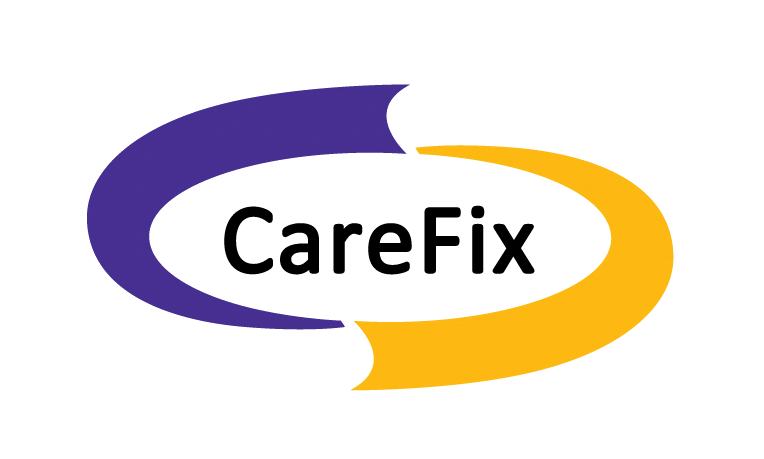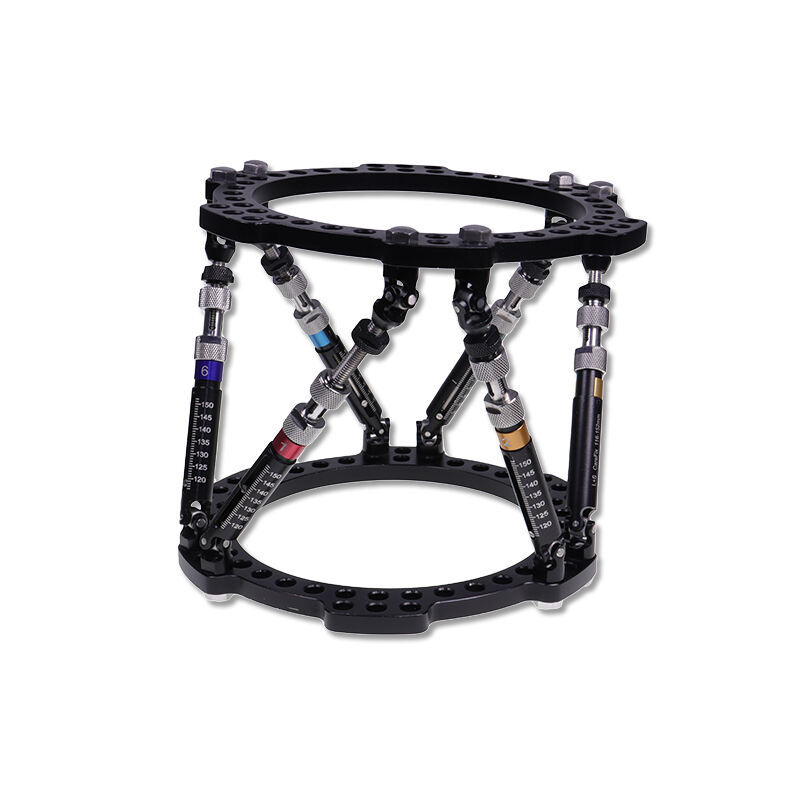Introduction to Taylor Space Bracket Technology
Evolution of 3D Orthopedic Solutions in Deformity Correction
Orthopedic medicine has evolved dramatically since those days when surgery meant big incisions and not much control over results. Back in the day, most orthopedic work required cutting open patients extensively just to manually fix whatever was wrong. This approach usually left people stuck in lengthy rehab sessions with unpredictable results. Things changed quite a bit with the arrival of 3D modeling and printing tech. Doctors started using imaging scans to build detailed virtual models of bones and joints, which made treatment planning much more accurate and customized for each person. A major breakthrough came with what's now called Taylor Space Bracket Technology. This innovation has really boosted both medical results and how happy patients end up being after their surgeries. Looking ahead, as 3D printing gets even better, surgeons will be able to match their interventions far more precisely to the unique shape and needs of every individual patient's body structure.
Core Principles of Taylor Spatial Frame Systems
Taylor Spatial Frame represents a game changing method for correcting bone deformities in orthopedic surgery. Basically, it's made up of metal rings connected by adjustable struts and brackets that slowly move bones back into their proper positions over time. What makes this system so special are the underlying biomechanical concepts that allow doctors to make small, precise adjustments while causing minimal discomfort for patients during recovery. Looking at actual medical records from hospitals around the country shows just how well these frames work when it comes to getting bones aligned correctly again. Surgeons who have used Taylor Spatial Frames report better outcomes compared to traditional methods, which explains why many clinics now keep several units on hand for complex cases where standard approaches simply won't do.
For more information about the Taylor Space Bracket Technology, you can explore further details through Taylor Space Bracket Technology.
Key Technical Advantages of 3D Orthopedic Systems
Precision Correction Through Computer-Assisted Planning
Orthopedic surgery has gotten much more precise thanks to computer assisted planning, changing the game for correcting deformities. Surgeons now use advanced imaging combined with smart algorithms to create treatment plans that really match what each patient needs based on their specific body structure. The whole process relies on solid data analysis too, making sure patients get care that works for them personally rather than one size fits all approaches. Research from places like the Journal of Medicinal Food shows real results here. We're talking better accuracy during operations and fewer complications overall. This kind of precision makes a big difference in managing deformities effectively without unnecessary risks.
Six-Axis Gradual Deformity Adjustment Capability
Six axis adjustment systems offer something truly special when it comes to fixing complicated deformities that just won't respond to standard treatments. What makes these systems stand out is how much more flexible they are compared to older techniques. Doctors can make precise changes in several directions at once, which wasn't really possible before. Looking at actual cases from medical journals shows some pretty impressive results too. Patients who underwent treatment with this technology often saw their deformities reduced and reported better quality of life after recovery. When researchers compare these new systems against traditional methods, they keep finding the same thing time and again the six axis approach adapts better to different situations while maintaining exceptional accuracy. That's why many orthopedic specialists now consider it the gold standard for tackling those tricky bone alignment problems.
Minimally Invasive Surgical Benefits
Orthopedic surgery has seen great improvements with minimally invasive methods that come with real perks for patients. Recovery periods are much shorter than traditional approaches, and there's also a noticeable drop in complications after operations. Take the Taylor Spatial Frame as an example it makes those less invasive procedures possible while improving what patients go through during their healing process. We've actually seen this work out well in practice too. Many folks who've had these surgeries talk about how they felt better sooner and got back to normal activities without too much trouble. As newer tech continues to make its way into operating rooms across the country, doctors find they can do amazing things with smaller incisions and less trauma to surrounding tissues. This fits right in with where medicine is heading today everyone wants treatments that work well but don't leave people stuck in bed for weeks recovering.
Clinical Applications in Complex Malformations
Severe Limb Length Discrepancy Management
When someone has serious differences in leg length, it creates all sorts of problems that need special handling to manage properly. Back in the day, doctors mostly used regular surgery methods which were pretty invasive and came with risks like infections or long healing periods. Things changed when 3D orthopedic tech entered the scene, particularly devices like the Taylor Spatial Frame. These new systems let surgeons actually lengthen or shorten bones precisely to get better results. The tech works by using complex computer models to create custom treatment plans tailored specifically for each patient. Real world examples show how well this works. One study looked at people who had their legs aligned using the Taylor Frame and found they walked better and felt much happier with their treatment. Moving forward, clinics that adopt this kind of advanced tech can provide much better care for folks dealing with these tricky limb length problems.
Congenital and Post-Traumatic Angular Deformities
When dealing with angular deformities that are either born with someone or caused by accidents, doctors usually need to get pretty creative with their treatment approaches. These issues show up as all sorts of misalignments at different angles, making standard correction techniques fall short since they don't account for specific dimensions properly. The Taylor Spatial Frame changes the game here because it works so well thanks to careful calibration and advanced computer models that let surgeons fix problems in multiple directions at once. For example, patients suffering from cubitus varus - which happens when bones heal incorrectly after fractures - have seen real improvements. Studies looking at how these frames perform in actual practice tell us that both function gets better and people report being happier with results. Looking at all this evidence makes it clear why many orthopedic specialists consider this system one of the best tools available for handling complicated bone deformations.
Infected Non-Unions Requiring Stabilization
When dealing with an infected non-union, we face one of the toughest problems in orthopedics. These occur when broken bones just won't knit back together properly, causing ongoing pain and making treatments much harder to manage. Standard methods for stabilizing such fractures have always been complicated affairs, with plenty of cases where they simply don't work and recovery takes forever. That's why advanced 3D systems like the Taylor Spatial Frame have become game changers in recent years. They give surgeons far better control over how bones are positioned during healing while maintaining optimal mechanical conditions throughout the process. Studies show patients treated with these systems tend to recover faster and suffer fewer infections down the road. Moving away from old school approaches means doctors can now provide more consistent results for people struggling with these difficult bone issues.
Future Directions in Deformity Correction Technology
AI-Driven Predictive Modeling Advancements
The field of orthopedic surgery is seeing major changes thanks to artificial intelligence, particularly when it comes to predicting what will happen after operations and figuring out better ways to plan them ahead of time. With AI systems able to process mountains of medical information, doctors now have tools that help forecast results and create customized approaches for patients before they even step onto the operating table. These machine learning programs let surgeons adjust their strategies according to each person's unique situation, considering factors that standard techniques often miss entirely. Studies coming out lately point toward even greater improvements down the road as hospitals start incorporating AI directly into daily practice routines. The real world impact? Surgeons report seeing clearer pictures of what works best for different cases, which ultimately means better recovery rates for people undergoing joint replacements or spinal procedures across the country.
Hybrid Robotic-Assisted Adjustment Systems
Robots are changing the game for orthopedic surgery, especially when precise movements matter most. Hybrid systems that mix robotic accuracy with surgeon know-how are taking deformity correction to new heights in terms of getting things right first time. The best part? These setups let skilled doctors bring their years of experience to bear alongside machines that can perform tasks with incredible consistency. This combination cuts down on mistakes made by tired hands and leads to better patient recovery times overall. Some hospitals have already started testing these mixed approaches in real operations, and early feedback suggests they're fixing bone alignment issues much more accurately than traditional methods alone. Looking ahead, experts believe within five years we'll see these systems becoming standard equipment in many operating rooms across the country.
FAQ
What is the Taylor Space Bracket Technology?
The Taylor Space Bracket Technology is an advanced orthopedic solution that utilizes 3D modeling and printing technologies to enhance the accuracy and personalization of deformity correction in orthopedic procedures.
How does the Taylor Spatial Frame system work?
The system combines rings, struts, and a specialized bracket to gradually realign bones, based on advanced biomechanical principles, to incrementally correct deformities with precision and minimal patient trauma.
What are the benefits of the six-axis deformity adjustment capability?
The six-axis system offers unprecedented control and flexibility in correcting complex deformities by allowing detailed adjustments across multiple planes, greatly improving adaptability and precision compared to traditional methods.
Why is AI important in future orthopedic surgeries?
AI is revolutionizing orthopedic surgery by enabling predictive modeling and outcome forecasting, optimizing personalized treatment plans, and integrating machine learning analytics for enhanced surgical precision and outcomes.
How does robotic-assisted technology impact deformity correction?
Robotic-assisted technology elevates deformity correction by integrating robotic precision with human expertise, reducing human error, and improving surgical outcomes through more accurate and efficient procedures.


